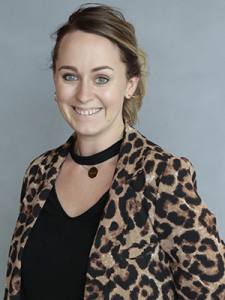A student-led team at UT Dallas trained in providing basic life support and first-aid services is helping cut down on 911 response times by addressing on-campus incidents prior to the arrival of an ambulance.
Junior pre-med neuroscience major Scott Bell is chief of the University Emergency Medical Response team. A certified emergency medical technician, Bell said he joined the team in August 2017 when its services were relegated to special events. Now the 30-member volunteer team responds to on-campus calls 24-7.
His role as chief of the UEMR team is in addition to his responsibilities as a full-time student, meaning his free time is mostly nonexistent. Still, Bell said he is appreciative for a chance to get his "foot in the door." Following graduation he plans to become a physician in the realm of emergency medical care.
"Our EMTs have had a steep learning curve, but when a call happens you are responsible for anything that happens on campus, whether it is a stubbed toe or a cardiac arrest," he said. "It’s a lot of fun, but a good educational thing for you as well."
Partnership with the fire department
Student EMTs are not completely independent of oversight by professionals in the city's fire department, Chief Curtis Poovey said.
Any time a 911 call is made from campus to the city's dispatch system, the fire department is notified as well as the UEMR team through an app called Active 911. However, student EMTs will likely be the first group to respond to the scene of an accident on campus and can attempt to remedy a situation through basic life-support measures before fire department intervention is needed.
"What [the UEMR team] is totally doing is putting medical personnel at the patient’s side much faster, which is a huge benefit for the patient," Poovey said.
On average, the UEMR reduces response times by 5 minutes, according to UTD Police Chief Larry Zacharias. Using golf carts, the team is able to arrive at any location on campus within 2-4 minutes of a call being placed. All medical services provided by the team are free of charge, whether the patient is a student, a faculty member or a visitor to campus.
The most important advantage provided by the UEMR team, Bell and Poovey said, is the ability to deftly navigate the intricacies of UTD's campus—something that has proven difficult for the city's emergency vehicles in the past.
"Response times can get really delayed on campus because ambulances are trying to figure out where they are going," Bell said. "There can be a significant amount of time before they get to a patient's side and initiate care, so that is where we are bridging the gap and assisting the fire department."
The UEMR team also has 24-hour access to a hotline monitored by medical personnel at UT Southwestern, which dictates the team's protocols through its BioTel EMS system.
"Any questions on the scene, any patients that are trying to refuse transport, a [UT Southwestern] physician can get on the call and explain why they need to be transported," Bell said. "... So we are providing that care to a high standard but also utilizing other resources when needed."
UEMR impact
A monthly report provided by the UEMR team shows that between two and 10 calls were made per day during the month of September. The majority of those calls—48.6 percent—were trauma related, and 91 percent of patients were students. Incidents the UEMR team has responded to in the past include skateboard accidents, respiratory problems, seizures and strokes, Bell said.
In general, Bell said the UEMR is able to handle non-life threatening emergencies that do not require emergency transport. Of the calls made in September, 62.9 percent were handled solely by the UEMR.
"[The UEMR program] has progressed faster than I ever thought it would," Poovey said. "They are covering those minor injuries because they are right there on site and not calling us, which is totally appropriate."
Call volume in the first month of the 2018 fall semester equaled the entire spring 2017 semester's call volume, so an influx of new EMTs into the program is vital, Bell said. Seventeen students are currently enrolled in an on-campus EMT training class, and most of those students will join the UEMR team in the spring.
"Right now our goal is being able to sustain the 24-7 coverage, to be able to facilitate more communication and be able to create a relationship with the FD," Bell said.
And while the UEMR program is helping to significantly reduce response times, Poovey said he looks forward to the day when the team can independently handle minor incidents.
"That will make us available for the rest of the city," he said. "A large portion of all ambulance calls are basic-level treatment that EMTs can do. The day that we come to agreement on what they can run on their own and what they have to call us on, once that happens, we will see a very large decrease in responses."





